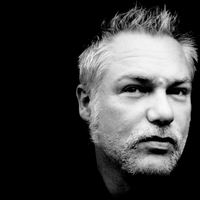Papers by marinella rodi-risberg
Gramarye: The Journal of the Chichester Centre for Fairy Tales, Fantasy and Speculative Fiction 20, 2021

Carolivia Herron’s Thereafter Johnnie is an experimental, non-linear and multiperspective work co... more Carolivia Herron’s Thereafter Johnnie is an experimental, non-linear and multiperspective work composed in free-indirect speech that poetically depicts the horrors of contemporary familial sexual abuse linking it to the tragic history of slavery. In the process, the novel breaks with literary conventions by referencing Western classical myths and classics, biblical stories, and African American literature and culture, including slave stories and spirituals. Herron’s novel also blends the generic styles and traditions of epic, myth, realism, fairy tale, and historical fiction. Consequently, critics and reviewers have called it variously “an epic,” “a multi-voiced historicized narrative,” and a “contemporary narrative of slavery” (Christian 152; Daly, “Whose Daughter” 473; Keizer). While Herron’s novel can be said to be all of these things, Thereafter Johnnie is primarily a trauma narrative of the family and the nation, in which the generic and narrative (con)fusion of the novel indic...
This multidisciplinary collection of articles illuminates the ways in which the concept of female... more This multidisciplinary collection of articles illuminates the ways in which the concept of female deviance is represented, appropriated, re-inscribed and refigured in a wide range of texts across t ...
Trauma and Literature
This is a self-archived version of an original article. This version may differ from the original... more This is a self-archived version of an original article. This version may differ from the original in pagination and typographic details.
Critique: Studies in Contemporary Fiction, Feb 12, 2018

Ecozon@: European Journal of Literature, Culture and Environment, Sep 16, 2019
Nature and mountains are often represented as places of healing in literature and the media, espe... more Nature and mountains are often represented as places of healing in literature and the media, especially for white, healthy, and middleclass men. However, discussions on nature and gender in relation to trauma are rare, and a specific discussion on the representation of male mountain climbers' traumas is missing. In this article, we are interested in how nature, particularly the famous mountain El Capitan, is represented in Jeff Long's novel The Wall (2006) and Tommy Caldwell's memoir The Push (2017) as a specific spatial location of healing for male rock climbers, who at the same time are both victims of traumatic events and partially responsible for the development of those events. More specifically, this article places ecofeminist and ecological masculinities scholarship in dialog with trauma studies and analyzes these texts with the aim of showing how representations of trauma relate to those of nature and masculinity. In this analysis, questions of how certain aspects of ecological and hegemonic masculinities relate to representing trauma, nature, and masculinity are central, as are issues of perpetrator trauma and the non-generic character of traumatic experience. Ultimately, we show how representations of nature, trauma, and masculinities in the primary texts converge and reflect a plurality of gendered responses to trauma and healing in nature.
Discourse, Context & Media
Studies in the Novel, 2015
Journal of Literature and Trauma Studies, 2012

Critique: Studies in Contemporary Fiction
International 4), so the story is only partially told. Even if reported, non-Native men evade tri... more International 4), so the story is only partially told. Even if reported, non-Native men evade tribal criminal sanctions if the rape took place on tribal lands (Deer 7). Present feminist Native scholarly discourses link this gendered sexual violence to a heritage of past human rights violation: Dian Million (Tanana Athabascan) called gender violence "[t]he abject heart of colonialism and neocolonialism" (Therapeutic 177), and Muscogee (Creek) Nation scholar Sarah Deer, sees rape as "a political issue with settler colonial foundations" (xxiv). 3 Awareness of this connection between past and present traumas can help to make the need for social justice visible and the critique of this violence more effective. The above references to social and historico-cultural events help position the present analysis of trauma in Betty Louise Bell's (Cherokee) Faces in the Moon (1994), which, like the numbers cited above, challenges American exceptionalism and the US as a safe haven that protects human rights rather than violates them. Whereas Ojibwe author Louise Erdrich's novel The Round House (2012) was motivated by the "one in three" statistic, Faces in the Moon instead emerges as prophetic to today's increased mainstream acknowledgment of gender violence on and off reservations. Bell does this by drawing attention to the connection between past and present traumas and their effects by mixing genres such as the novel form and Native storytelling and including different temporalities: ancestral ghosts, stories, and emotions from the past irrupt in the linear narrative present. Critics have read it as a feminist Bildungsroman with elements of magical realism, or a Kustlerroman that parallels ideological work performed by postcolonial literature, and observed its juxtaposition of linear and cyclical time. 4 They fail, however, to realize that its generic and temporal innovativeness has to do with trauma in relation to indigenous cultural traditions. The text is a reaction to the consequences of sexual violence, poverty, and colonization experienced by Native peoples, and as such qualifies as a trauma narrative: 5 it also displays the "generic hybridity" that











Uploads
Papers by marinella rodi-risberg